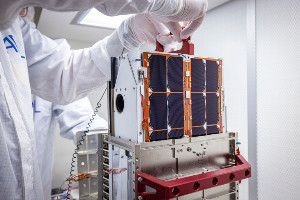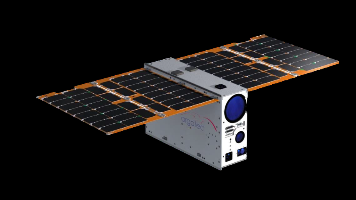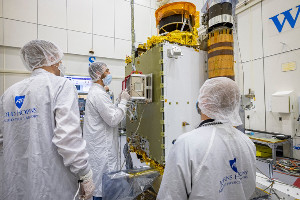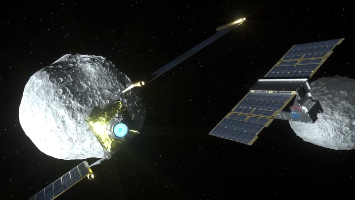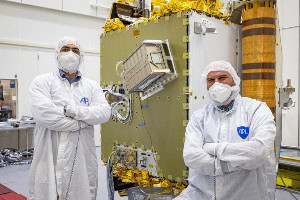| Satellite name | LICIACube (Light Italian Cubesat for Imaging of Asteroids, LICIA) |
|---|---|
| Type | CubeSat |
| Units or mass | 6U |
| Mass in kg | 12.98 kg |
| Status | Operational (Deployed from DART on 2022-09-26 and successfully took images of the Dimorphos impact as per official news on 2022-09-27 as of 2022-12-25. SmallSat 2023 paper does not say if still operated.) |
| Launched | 2021-11-24 |
| NORAD ID | On spacecraft |
| Deployer | RailPOD [Tyvak] |
| Launcher | Falcon 9 (DART) |
| Deployment | Deployed from DART on 2022-09-26 |
| Entity name | Italian Space Agency |
| Institution | Space agency |
| Entity | Government (Civil / Military) |
| Headquarters | Italy |
| Manufacturer | AIVT by Argotec |
| Oneliner |
After traveling 16 months on DART, will be released in order to monitor all effects of the impact. |
| Description |
After traveling 16 months onboard the DART satellite, LICIACube, the Italian cubesat, will be release in order to monitor all effects of the impact: the crater and the evolution of the debris produced by the collision. All data acquired during this phase of the mission will be very important to verify the efficacy of the impact. It will be the first Italian mission destined for a target so far away. In order to deal with this unique mission, the Argotec platform will use an autonomous navigation system, an integrated propulsion system, a strong camera and an advanced on-board computer. The LICIACube will fly by about 3 minutes after impact, recording details of the impact plume and surfaces at resolutions up to 2 meters per pixel. After impact, Earth-based observations will continue in order to characterize the resulting change in orbit of Dimorphos induced by the impact. The distance to Earth at impact will be approximately 11.2 million km. (The ESA Hera mission is planned to fly by Didymos in 2026 for followup observations.) Released approximately 2 days before the DART impact. LICIACube will perform a separation maneuver to follow behind DART and return images of the impact, the ejecta plume, and the resultant crater as it flies by. It will also image the opposite hemisphere from the impact. LICIACube is 3-axis stabilized and has a propulsion capability of 56 m/s. The onboard imager has a 7.6 cm aperture, F/5.2 telescope, and an IFOV of 2.9 arcsec/pixel. |
| Results |
[DART released LICIACube 360 hours before the impact on the asteroid, which was piggybacked during its travel. In this framework, the LICIACube spacecraft was able to obtain multiple images of the DART impact ejecta plume over a span of 15 minutes, being successful in its scientific objectives [1]:](https://digitalcommons.usu.edu/smallsat/2023/all2023/66/)
|
| Sources | [1] [2] [3] [4] [5] [6] [7] [8] [9] [10] [11] [12] [13] |
| Photo sources | [1] [2] [3] [4] [5] |
| Keywords | Beyond LEO orbit, Propulsion, Beyond Earth orbit |
| Space photos |     
|
Last modified: 2023-12-02
